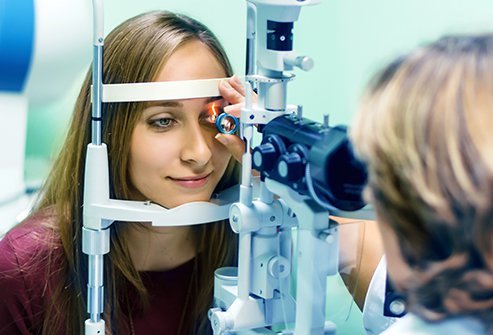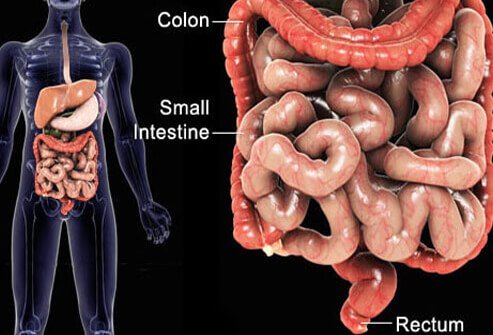Crohn’s disease complications

Eye problems due to Crohn’s disease are common and dangerous. Eye problems associated with Crohn’s disease include uveitis, episcleritis, scleritis, dry eyes, and orbital myositis.
Eye problems due to Crohn’s disease are common and dangerous. Crohn’s disease is an inflammatory bowel disease (IBD) and chiefly affects the small intestine. People with Crohn’s disease have digestive problems, abdominal pain, diarrhea, weight loss, and other symptoms. Though considered an intestinal disease, as many as half of these people have associated disease in other organs.
About 12% of people with Crohn’s disease are likely to have problems with their eyes. Sometimes, eye problems typical of Crohn’s disease appear before intestinal symptoms.
Crohn’s disease is an autoimmune disease. Your body’s guardian, the immune system, attacks your gut cells. As many as 50% of people with Crohn’s disease also have problems in other systems and organs.
Among the problems associated with Crohn’s disease outside the digestive system, the most common areas affected are joints (arthropathy), bones, and muscles.
An important distinction between these other complications is how they progress. Some conditions are tied to the disease activity, and they get worse when Crohn’s disease flares and settle down when the disease is quiet. On the other hand, problems such as uveitis are disease-independent, and these can progress and create dangerous situations even when Crohn’s disease is under control. You must always be on your guard and have regular checkups if you have any disease-independent problems.
Eye problems of Crohn’s disease
Eye problems are seen in 4% to 12% of people with Crohn’s disease. The most common problem is episcleritis, and uveitis is seen in less than 3% of people with Crohn’s disease. Still, it poses the most danger to vision in these people.
Other, less common eye problems in Crohn’s disease patients are scleritis, glaucoma (increased pressure on the nerves of the eye), and keratopathy (corneal inflammation and perforation). Though rare, they are dangerous to vision, and you need expert treatment by an ophthalmologist.
Uveitis (iritis)
The uvea is the eye’s middle layer and is divided into anterior, intermediate, and posterior parts.
Anterior uveitis involves the iris, the dark ring surrounding the pupil of your eye. Inflammation of the iris is called iritis. It is the most common form of uveitis in Crohn’s disease.
Intermediate uveitis is an inflammation of the middle eye, called vitritis. Posterior uveitis involves the choroid layer (choroiditis), which is less common than iritis. Sometimes, all three parts of the uvea are inflamed (this is called panuveitis).
All types of uveitis cause:
Untreated, uveitis can cause blindness.
Uveitis is independent of Crohn’s disease activity. This means it can progress even when your intestinal disease is under control. Once you know you have uveitis, you must be vigilant and go to your ophthalmologist regularly. Uveitis appears before the intestinal symptoms of Crohn’s disease in over half of people with this disease.
Uveitis is treated with anti-inflammatory eye drops. Sometimes, corticosteroids or other immunosuppressive drugs are needed.
Episcleritis
The sclera and episclera are the outermost layers of the eye. Episcleritis is inflammation of the episclera and is one of the common eye problems with Crohn’s disease. You will notice redness in the whites of your eyes. This condition doesn’t often cause pain, but you could have itching and burning.
Episcleritis is linked to Crohn’s disease activity. Though you may need some anti-inflammatory eye drops, controlling your Crohn’s disease will give you relief from episcleritis.
Scleritis
Scleritis is less common than episcleritis but more dangerous, and pain in the eye is common. If you have vision problems, you should see an ophthalmologist urgently.

SLIDESHOW
Inflammatory Bowel Disease (IBD) Causes, Symptoms, Treatment See Slideshow
Dry eyes
Dry eyes are part of Crohn’s disease itself. Vitamin A absorption is reduced when you have Crohn’s disease, and a deficiency can cause dry eyes. Dry eyes are treated with lubricant eye drops containing carboxymethylcellulose.
Orbital myositis
This is an inflammation of the muscles that allow you to move your eyes in different directions. It starts with pain in the orbit (the socket in your head that holds the eye). It may progress to diplopia (double vision), bulging of the eyes, and ophthalmoplegia (inability to move the eye).
Orbital myositis sometimes happens before the intestinal signs of Crohn’s disease.
Complications of Crohn’s disease treatment
Crohn’s disease affects the immune system, and your doctor will prescribe drugs to treat it. Among the drugs used are steroids, which suppress your immune system. These drugs have some side effects related to the eyes, including:
Glaucoma: Nerve damage from increased pressure in the eye.
Cataracts: Clouded lenses in the eye, reducing vision.
If you develop either of these, your physician may stop the steroid drops and prescribe other immunosuppressive treatments. You may also need surgery to resolve a cataract or treat glaucoma.
How to avoid Crohn’s disease eye problems
Most eye problems from Crohn’s disease come and go with flare-ups. Keeping Crohn’s disease under control and avoiding flare-ups is key to reducing and preventing eye issues. Episcleritis, keratopathy, and most eye problems will resolve when the condition is controlled. Some ways to keep the disease under control:
Uveitis and treatment-related complications may progress even when the disease is quiet. Everyone with Crohn’s disease should frequently have a full eye examination, including a slit-lamp exam.
Monitor any eye problems if you have Crohn’s disease
Crohn’s disease is a painful, long-lasting disease. It primarily affects the gut but is not restricted to it. It is common for several systems to be affected. Up to half of the people with Crohn’s disease have problems in another system, and 36% have more than two other systems involved.
Crohn’s disease eye problems should be monitored as they threaten sight and can reduce the quality of life. You must be very careful with these problems. Once you’re diagnosed with Crohn’s disease, you should visit your ophthalmologist regularly. Early diagnosis of eye problems will likely lead to successful treatment and vision preservation.
Latest Digestion News
Daily Health News
Trending on MedicineNet
Medically Reviewed on 7/1/2022
References
American Journal of Gastroenterology: “Effect of Lifestyle Factors on Outcomes in Patients With Inflammatory Bowel Diseases.”
European Journal of Case Reports in Internal Medicine: “Keep an Eye Out for Crohn’s Disease: Orbital Myositis as the Initial Sign before Gastrointestinal Manifestations.”
Expert Review of Gastroenterology and Hepatology: “Extraintestinal manifestations in inflammatory bowel disease – epidemiology, genetics, and pathogenesis.”
Gut: “Vitamin A deficiency in Crohn’s disease.”
Malik TF, Aurelio DM. StatPearls, “Extraintestinal Manifestations of Inflammatory Bowel Disease,” StatPearls Publishing, 2021
Saudi Journal of Medicine and Medical Sciences: “A review of extraintestinal manifestations and complications of inflammatory bowel disease.”
World Journal of Gastroenterology: “Extraintestinal manifestations in inflammatory bowel disease.”